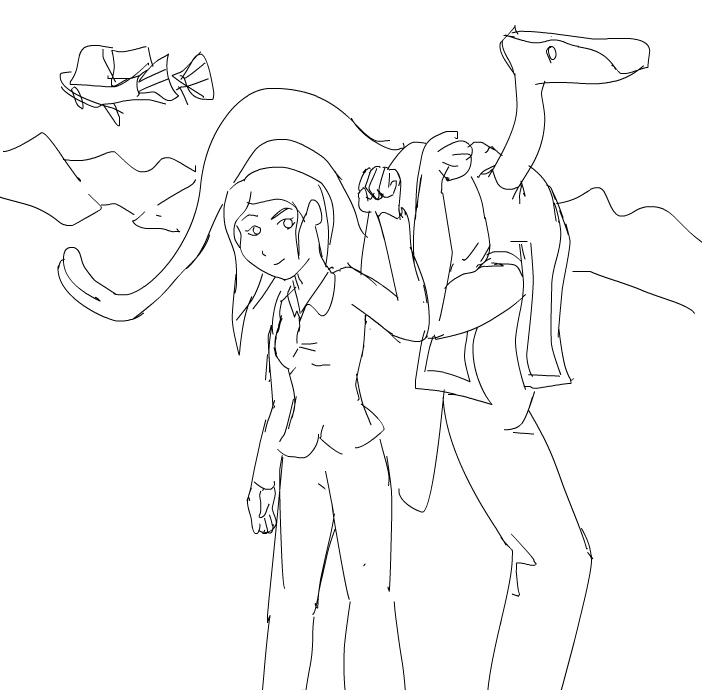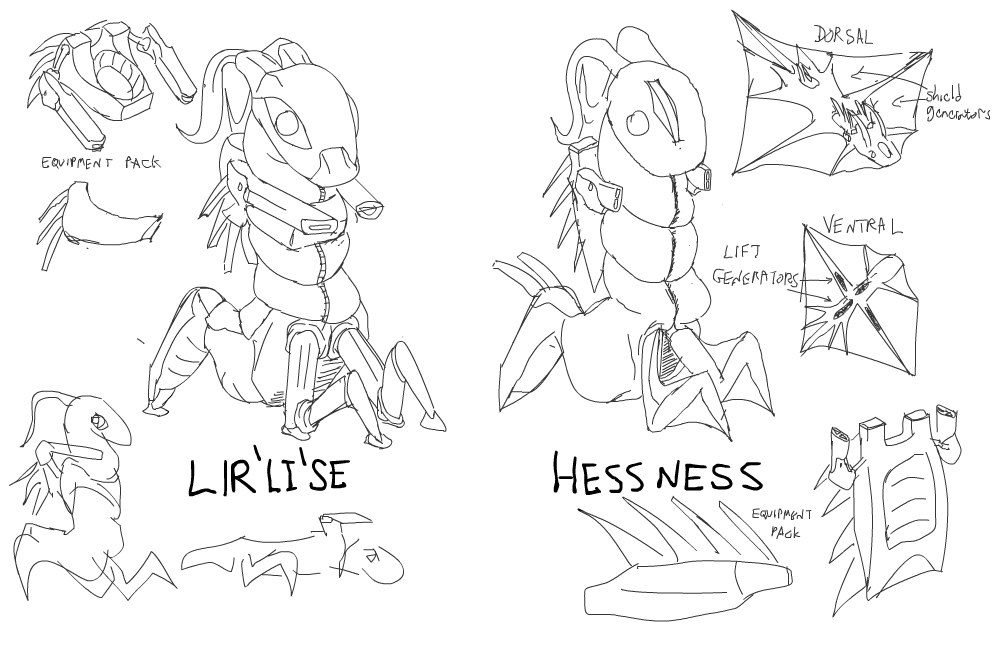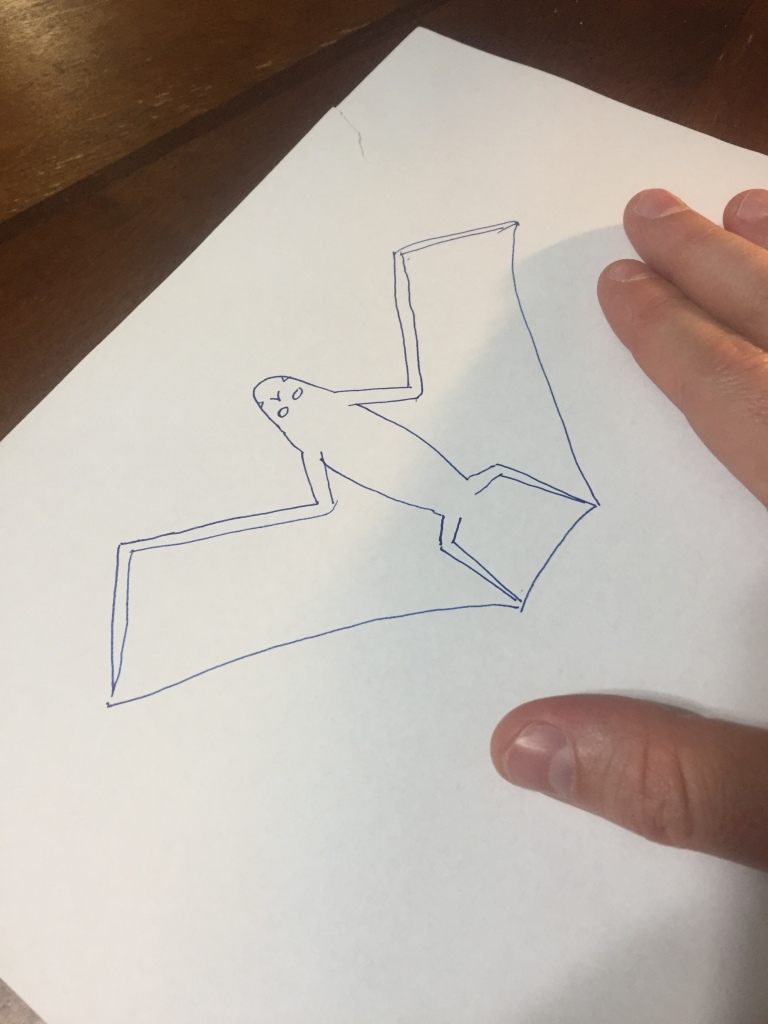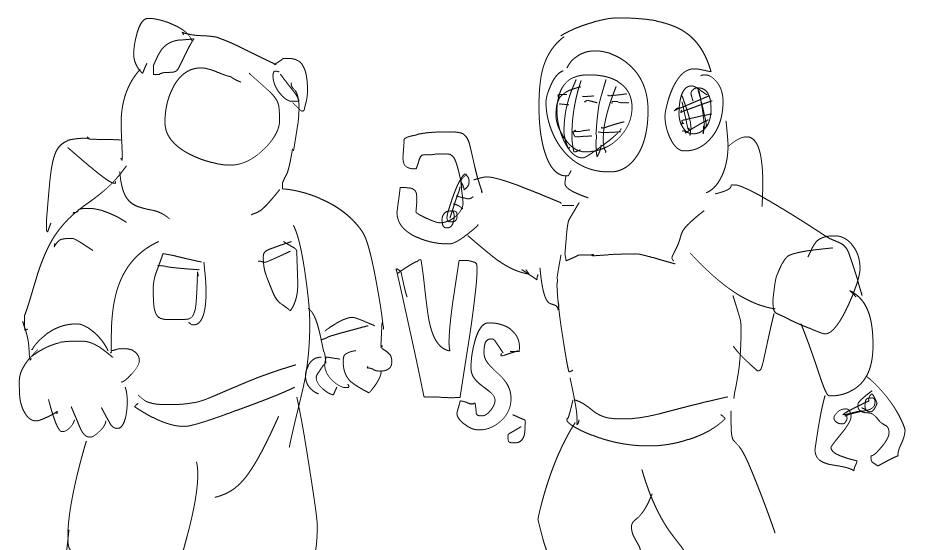Today’s illustration is of the unit’s odd couple, Sarine and Thoris. I wrote a bit about Sarine earlier in the post Sketches: Human Armor. Sarine is a respected veteran far older than her appearance. While she is not the most extroverted or social person, she is known to be a reliable asset on the battlefield and a trove of sparingly-shared wisdom. Having lived for centuries, Sarine is fairly particular in her tastes. She has seen many people come and go over her long lifetime, so she doesn’t spend much time on people unless she sees a the potential for a meaningful and lasting bond. Most people won’t get much more than an impatient acknowledgment from Sarine. But those she takes a shine to can gain a loyal and supportive friend.

Born in the late 20th century, Sarine was of the first generation of humans to become non-aging. In many ways she is the leading edge in the great human experiment that has unmoored the species from its original limitation. Sarine is a fairly well-known among this first generation. Scientists and academics still treat her as a bellwether of the new human condition. For her part, Sarine describes her life as “fairly normal, just long”. Her decision to restart her aging has led many to speculate that she has resolved to die at the end of her newly established lifespan. But not being prone to melodramatics, Sarine has kept her reasons to herself.
Thoris on the other hand is a wildly different creature. Thoris is what is referred to commonly as a Mod: A being whose origin is biological but that has modified itself artificially to be physically different. Mods range from those with minor or unnoticeable changes to those who bear little resemblance to their original form. Thoris was born a human male, and despite only retaining few human organs, still self-identifies as such. Thoris’ personality is obsessive and quirky. He is enthralled with patterns and numbers, ceaselessly attempting to tease out hidden meanings in the world around him. He holds the number three in particular reverence and sees it as underlying all things. So deep is his obsession with the number, that he has reconfigured his body to have three eyes, three arms, and three legs. He has even gone to the extreme length of physically reconfiguring his brain from the natural two hemispheres to a three-lobe configuration. Thoris lives in a state of being that is nearly uncharted, altering the very nature of his psyche and delving into a level of self experimentation few would risk. It is for this reason that some in the unit are somewhat wary of him. But despite a nature that many find unnerving, Thoris is a stalwart defender of August and Proxima and has always come through for his allies.

This is the rough sketch of Thoris’ pose, I’ll write more about developing his design later.
Unit members are divided into pairs. The pairing process is heavily based on personality profiles and extensive trial exercises. It is unclear what bizarre force holds Sarine and Thoris as such compatible teammates. But their effectiveness in combat, leadership, intelligence, and a swath of other tasks has been impressive.
The featured illustration at the top of the post shows Thoris and Sarine in the story’s first battle on August Beach.






















